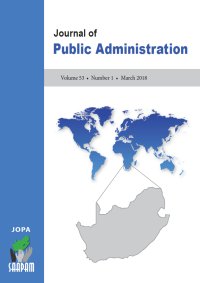
South African municipalities operate in an increasingly water scarce environment. This, coupled with the removal of apartheid-era barriers that regulated influx and residential movement, and the consequent urbanisation that has ensued, has placed them under severe pressure to manage competing demands for water and waterborne sanitation. This article is based on the findings from a study initiated by the University of Cape Town's Urban Water Management group, which sought to investigate the institutional arrangements for managing water resources in South Africa's four largest metropolitan municipalities. The study was prompted by the appeal of the Water Sensitive Urban Design (WSUD) concept, which advocates a holistic approach to managing urban water resources, focusing on the degree of coordination and integration. The data consisted of sixteen key informant interviews with twenty-six officials, and accompanying municipal pla